Ever wondered if those sleek solar panels basking in the sun are just silent power producers or if they’re secretly throwing a heat party on your rooftop? Spoiler alert: They’re not exactly the cool kids on the block. When I dug into the science behind solar panels and heat production, the revelations were quite illuminating, literally. You see, while we’ve been praising these shiny photovoltaic marvels for their electricity-creating superpowers, they’ve been pulling a ‘hot’ fast one on us all this time. Yep, heat generation from photovoltaic panels is a thing – and it’s a sizzling topic that’s heating up communities, both academically and on the ground level.
Now, don’t get me wrong, solar panels are still the environmental champions we know and love. But, living in ‘greener times’ means looking at the full picture. And the image I’ve got for you might just turn up the thermostat on how you see solar energy’s role in our urban jungles. So, brace yourself as we shed some light – no pun intended – on the heated affair between solar panels and our increasingly toasty cities.
Key Takeaways
- Solar panels aren’t just chill electricity generators; they’re also inadvertent heat conductors.
- Daytime heat increase due to solar panels is making city dwellers reach for their sunnies – and not just because it’s bright outside.
- Nighttime cooling takes a hit when solar panels enter the slumber party, potentially cranking up those AC units.
- Research suggests it’s time to bring shade and sunlight into a healthier balance on our rooftops.
- If solar panels were on a dating app, their profile might now read: “It’s complicated with city temperatures.”
The Hidden Dual Function of Photovoltaic Panels: Electricity and Heat
As I delve into the multifaceted world of photovoltaic technology, it’s hard not to be intrigued by the dual role solar panels play in our buzzing cities. Solar panels and thermal energy are hand-in-hand companions on the rooftops, silently altering the temperature balance. I find it downright fascinating that the performance of these shiny energy harvesters is only part of their story.
We often boast about the electricity generation prowess of solar panels, with efficiency numbers like 16-20% thrown around. But, what happens to the rest of the solar energy that our panels soak up? Quick physics lesson: It heats up the panels themselves, leading me to ask, how much heat do solar panels generate? Quite a bit, as it turns out.
Imagine this—solar panels are draped over our buildings, creating a stylishly warm blanket. This isn’t your average cuddly blanket, however. It’s one that gives us power while also cranking up the thermostat on its surface. The solar panel heat output sneaks into the surrounding air, pushing up those urban temperatures, giving us a warmer embrace than we might have bargained for.
“Solar panels can indeed be quite the hot commodity. And I mean that quite literally,” I remarked to a colleague, highlighting a study that showed a 1.3 °C temperature spike around solar arrays.
This nugget of knowledge certainly lights a spark. It means that when we’re plotting out our city energy plans, tossing in solar panels like sprinkles on a sundae, we might also be dialing up our local microclimate a notch or two. That’s enough to make you stop and think, isn’t it?
- Electricity generation—check.
- Heat generation—double-check.
- The potential to influence our solar deployment strategies—checkmate.
When it comes to the intricacies of solar panels and thermal energy, it’s clear that the panel is mightier than the sword. As city dwellers and energy enthusiasts, we’re on the brink of a rethink, looking straight into the eyes of our photovoltaic friends and questioning: “How do we keep the power but turn down the heat?” A most compelling challenge, indeed.
Solar Panels in Urban Landscapes: Friend or Foe to Cooling Costs?
As I weave through the urban jungle, I can’t help but notice the glistening surfaces atop roofs, basking in the sun’s glory. Solar panels, a beacon of renewable energy, have found their place in the city’s fabric. But do they bring the warmth of savings or the heat of added costs when it comes to cooling?
Shedding Light on Heat Generation by Solar Panels in City Environments
On a stroll through the city, I ponder on how **solar panels and heat production** seem to be playing a game of tug-of-war. While it’s common knowledge that these photovoltaic wonders **produce warmth**, I can’t shake off the idea that they might be stirring up the urban heat index. With the efficiency of solar panels not going beyond 25%, where does all that absorbed sunlight go? Back into the atmosphere as **heat emission**, my friends, warming up our concrete playground even more.
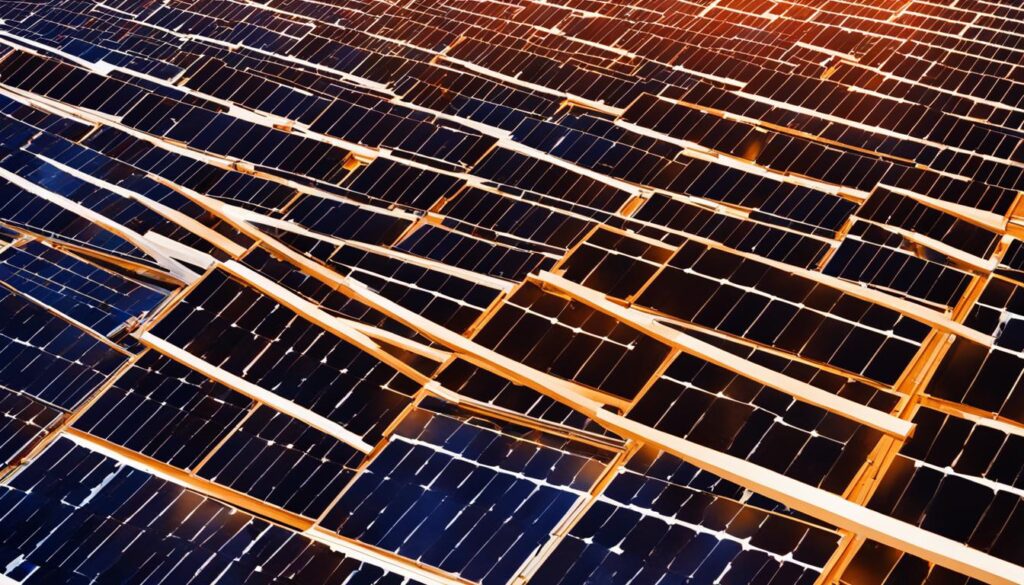
Peripheral Impacts: How Solar Panel Heat Affects Urban Air Temperatures
I’ve heard the buzz, and it’s about the **solar panel heat output**. Call it an urban sauna, if you will, because as these energy saviors focus on harvesting the sun’s power, they’re inadvertently turning up the thermostat on our already toasty cities. A few measurements here and some data there, and the verdict is in – the heat generated by these panels is indeed nudging the mercury upward, reshaping the idea of a comfortable outdoor espresso.
Unintended Consequences: The Paradox of Shaded Roofs and Increased Night-Time Heat
Enjoying the cool shade cast by solar panels feels like a blessing under the scorching noon sun. Buildings bask in their shadow, flaunting lower cooling costs by day. But here comes the plot twist – by night, these ally panels are double agents. While you’d imagine the Earth eagerly releasing its day’s heat collection back to the starry skies, **solar panels trap this heat**, almost like a mischievous child hiding snacks under the bed. Ah, Phoenix, my dear Phoenix, your dance of alternating between shades and cool breezes takes on a new choreography with these solar companions.
In the quest for sustainability, it’s clear that even the shiniest of solar panels come with their own thermal baggage. They stand at the crossroads of innovation and urban planning, whispering sweet promises of renewable energy while coyly warming up the streets. I can’t help but muse over their cheeky game.
Do solar panels generate heat? Oh, they do indeed, and I raise my iced latte to the brilliant minds out there tuning this symphony of sunlight, steel, and cityscape.
How ‘Cool’ Can Solar Panels Be? Advances in Solar Panel Technology
Let’s talk about a hot topic – literally. As I bask in the knowledge that my rooftop is part of a green revolution, I can’t help but wonder: do solar panels produce warmth? Yes, they do. But wait, before you start seeing solar panels as oversized electric blankets, let’s delve into the nuts and bolts of thermal output of solar panels. It’s not just about harnessing the sun’s power; it’s also about managing the heat generation from photovoltaic panels.
The Science Behind Solar Panel Heat Output and Efficiency Loss With Heat
Picture this: Your solar panels are sunbathing on the roof, soaking up rays. Now, as they get their tan on, they’re generating electricity – but also heat. Not quite the spa treatment one might imagine for our energy-producing friends. In fact, when the temperature rises, especially in sweltering cities like Phoenix, these silicon-based beauties start losing their cool – and efficiency. The heat emission from these panels intensifies the local heat island effect, creating an urban sauna that nobody signed up for.
Fostering Innovation: Potential Solutions to Mitigate Solar Panel Heat Absorption
In the quest to cool our solar powerhouses, some brainy folks are engineering solutions that could be game-changers. We’re talking high-tech reflective or emissive coatings that act as sunscreen for solar panels, reducing their thermal output by fending off undesired wavelengths. The result? A cooler panel and improved efficiency.
In the table below, let’s compare standard PV panels with these future “cool photovoltaics” – it’s like pitting a cell phone from the 90s against the latest smartphone.
| Feature | Standard PV Panels | Cool Photovoltaics |
|---|---|---|
| Heat Tolerance | Efficiency drops as the heat goes up | Engineered to minimize heat-induced efficiency loss |
| Surface Temperature | Can reach high temperatures under direct sunlight | Designed to reflect excess heat and stay cooler |
| Impact on Urban Heat | Contributes to urban heat island effect | Minimizes thermal output, lessening local warming |
| Advancements | Based on older solar tech | Incorporates materials with higher reflectivity and thermal emissivity |
So, while today’s solar panels may not be the icemen of renewables just yet, there’s hope on the horizon. With each scientific breakthrough, we get closer to a world where solar panels and heat emission don’t walk hand in hand. Until that day, I’ll keep my shades on and watch the horizon for the next big innovation in solar tech.
Do Solar Panels Have a Warming Effect on Our Blue Marble?
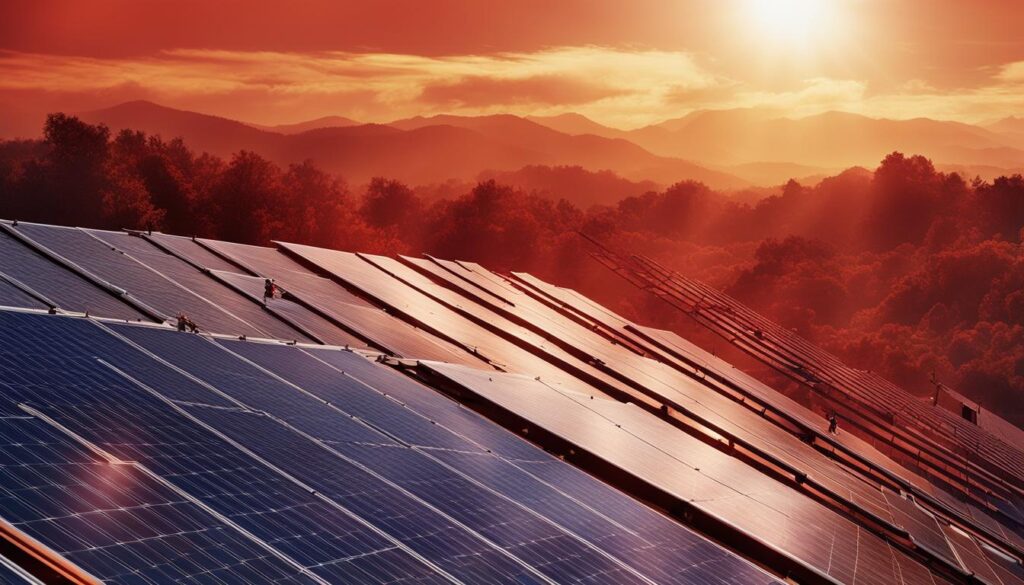
Let me lay it on you: Massive solar panel installations aren’t just soaking up the sun’s rays to power up our gadgets and gizmos. They’re playing a hot hand in the climate game, too. Yes indeed, these expansive arrays do solar panels generate heat—a fact we’re absorbing like that summer tan. Converting only a slice of sunshine to electricity, solar panels are basically throwing a heat party with the excess energy.
You see, while they sit there looking sleek and shiny, their solar panel heat output might be nudging our local thermostat up a notch or two. Picture this: vast deserts transformed into sprawling solar farms, which sounds pretty sci-fi and sustainable, right? But have we paused to ponder the potential plot twists of this eco-epic?
In regions like the Sahara, going full-throttle with solar could trigger some serious atmospheric antics. We could be looking at the reruns of rainfall patterns, global winds outfitted with new flight paths. In other words, our quest for clean energy could be stirring up a cocktail of environmental impacts we’d be wise to sip slowly.
As I dive deep into the possibility of our planet wearing a solar blanket, I can’t help but muse over the delicate balance mother nature insists on.
Now, let’s unpack this table of facts to see how the solar panels’ scorching secret might be on the verge of trending:
| Aspect | Impact |
|---|---|
| Daytime Heat Output | Temperature increase in localized areas, influencing microclimates |
| Night-Time Warming | Impeding natural cooling, potentially upping the need for AC |
| Desert Installations | Alteration of regional airflows and precipitation patterns |
| Global Climate Shifts | Modulation of temperature and weather phenomena on a larger scale |
If you’re like me, always scribbling on the edge of your napkin about the latest eco-conundrums, you’ve got to wonder—will our big blue marble warm up to the idea of solar panels as a cozy blanket? Or might it just throw it off, restless from a touch too much heat?
Conclusion: Harnessing the Sun with an Eye on the Horizon
As I wrap up this solar saga, it’s evident that while solar panels have been beacons of green energy, they’re not without their fiery little secrets—namely, heat generation by solar panels. Yes, these photovoltaic wonders have ushered us into a new era of energy production, but they’ve also left us with a thermal puzzle to solve. From the steamy streets of our cities to the delicate balance of our planet’s climate, their environmental impact is as real as the electricity they produce.
The Thermal Trade-Offs of Scaling Up Solar Energy
In our quest to scale up solar energy, we’re learning to dance with a partner that gives as much as it takes. Advanced solar panel technology comes with a caveat: the more we rely on solar power, the more we must reckon with the additional warmth cradled in urban canyons and sprawling deserts. But I’ll tell you this: we’re quick learners, and we’re already charting paths toward eco-friendly energy solutions that promise to cool our love affair with photovoltaics.
Beyond Reflectance: The Future of Low-Impact, High-Efficiency Solar Cells
Thinking about the future of solar energy gives me shivers—good ones. Gone are the days of settling for simple energy reflectance as the apex of solar technology. No, we’re on the cusp of embracing the ultra-sleek, ultra-smart, next generation of solar cells. Cool photovoltaics, they call them, destined to capture the sun’s bounty with minimal environmental backdraft. All that to say, if you care about your carbon footprint—and I know you do—keep your eyes peeled for these shiny new toys on the solar block.
FAQ
Do solar panels generate heat?
Indeed, solar panels generate heat. While their primary objective is to produce electricity, they do absorb sunlight that is not fully converted to energy. This surplus heat contributes to warming the surface of the panels, which in turn can affect surrounding air temperatures.
How do solar panels affect urban temperatures?
Solar panels contribute to higher urban air temperatures during the day due to the absorption and emission of heat. This is especially true when panels are installed over reflective surfaces, which can exacerbate the warming. At night, however, they can alter the normal cooling process by trapping heat.
Can solar panels actually increase cooling costs?
Although solar panels can offer shade and reduce the need for air conditioning during the day, the heat they hold at night can impact nocturnal cooling, potentially leading to higher night-time temperatures and increased cooling costs, especially in warmer climates.
Why do solar panels become less efficient as they get hotter?
As the temperature of solar panels increases, their efficiency tends to drop due to the temperature coefficient of the silicon used in traditional panels. Overheating of the panels can reduce their ability to convert sunlight into electricity, which is a well-known phenomenon in the industry.
What innovations are being developed to reduce the heat generation of solar panels?
Researchers are exploring and developing innovations such as highly reflective or emissive coatings that reject non-electrified heat. These “cool photovoltaics” aim to decrease the operating temperature of the panels, minimizing the thermal impact on the surrounding environment while enhancing efficiency.
Do large-scale solar installations have an impact on climate?
Yes, large-scale solar installations can alter local climate conditions due to the expansive surfaces absorbing sunlight and emitting heat. These changes might extend to altering weather patterns, including rainfall and wind, especially in regions where massive solar farms are present.
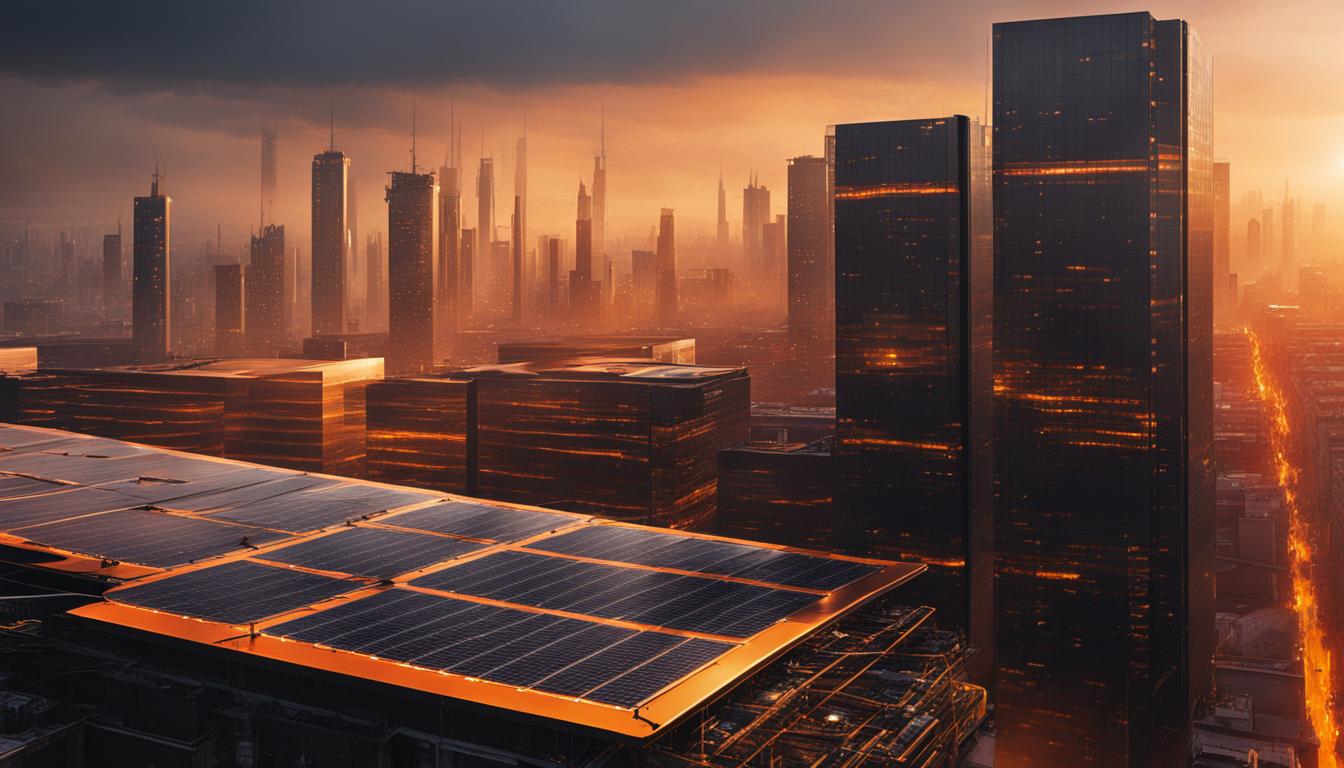
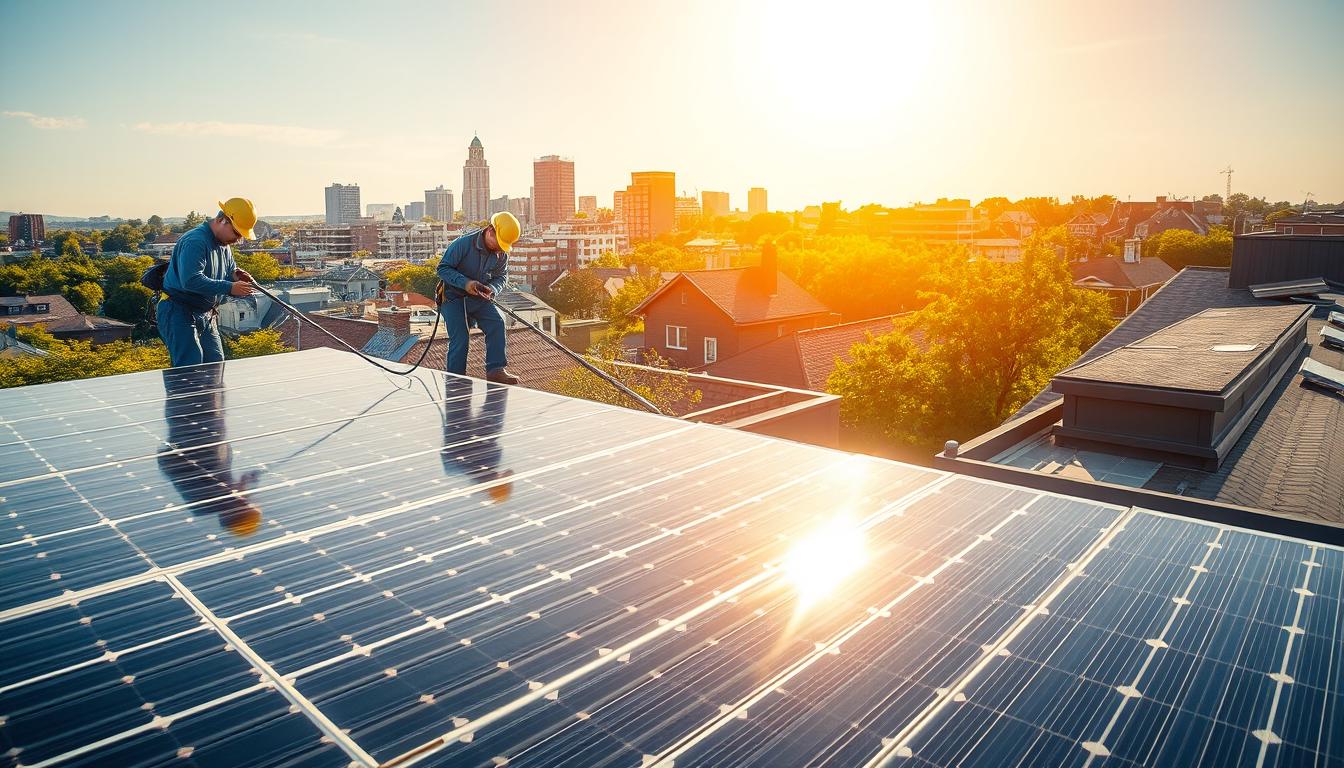

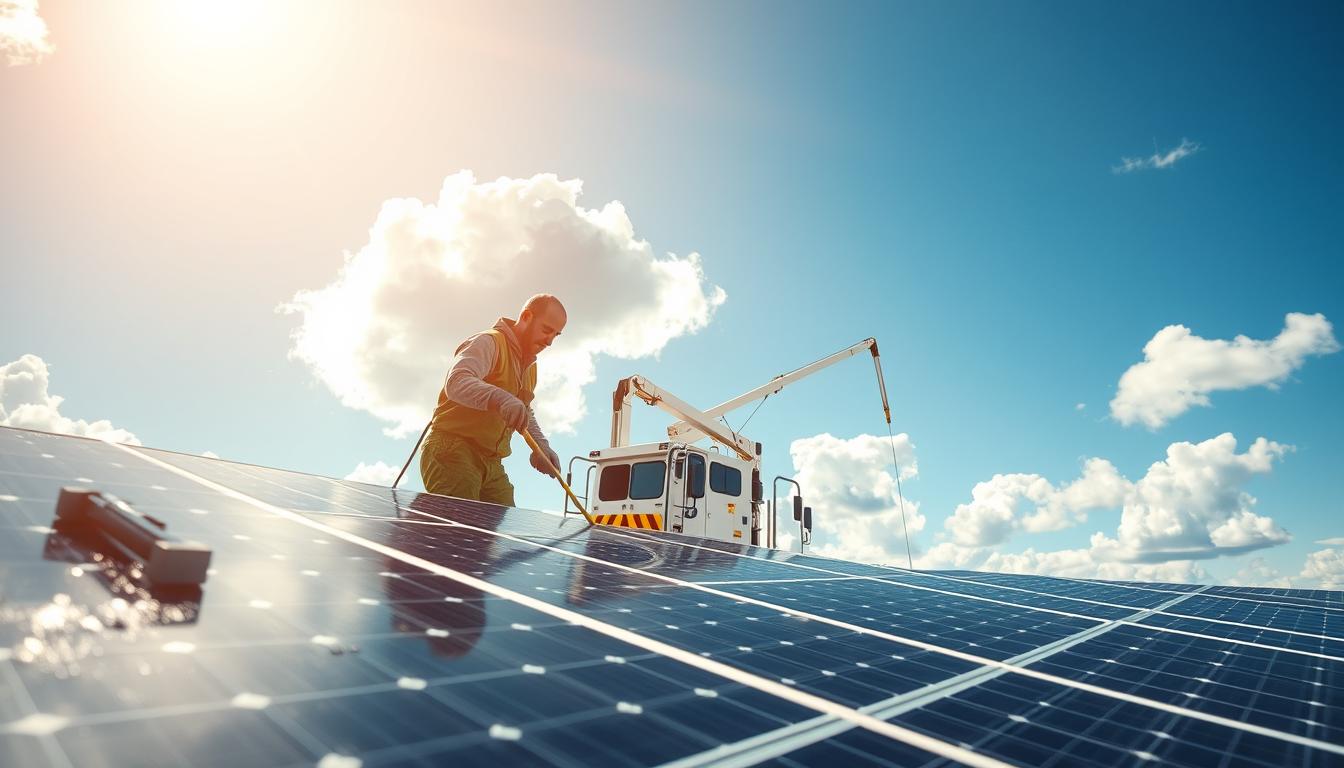
Who needs a heater when you can just cover your walls with solar panels?
I cant believe solar panels can also generate heat! Talk about multitasking! 🌞🔥
Wow, who knew solar panels could generate heat too? Mind blown! 🤯 #RenewableEnergy
Wait, so solar panels not only generate electricity but also heat? Mind blown! 🌞🔥
Wow, who knew solar panels could do more than just generate electricity? Impressive stuff!
Actually, many people are aware of the various uses of solar panels beyond electricity generation. Its not that impressive if youve been keeping up with the advancements. Dont be so easily amazed, my friend.
Who needs a heater when you can just cuddle up to your solar panels? 😂❄️
Who wouldve thought solar panels could double as mini heaters? Mind-blowing!
Title: Heat Generating Solar Panels? Lets Embrace the Extra Toastiness!
Comment: Well, well, well… solar panels generating heat? Count me in for some extra warmth during those chilly winter months! 🌡️🔥 #SolarHeatLover
Wow, who knew solar panels could actually make our cities hotter? Mind blown! 🤯
Who needs solar panels when you can just crank up the AC? #HeatwaveSolutions
I think solar panels causing heat in cities could lead to hotter summers!
I believe solar panels are secretly powering up aliens in disguise. Discuss!
I think solar panels should have a setting to generate heat for winter!
I believe solar panels melting icebergs in Antarctica is a valid concern.
Do solar panels really contribute to urban heat islands? Lets discuss! 🌞🔥
Interesting debate! Do you think solar panels help or hinder cooling costs in cities?
I believe solar panels generating heat can be beneficial for colder climates.
Are solar panels secretly heating up our cities instead of cooling them down? 🤔
I think solar panels should be used to warm up swimming pools! 🏊♂️🌞
I think solar panels should be used for heating more than electricity.
Do solar panels secretly cause global warming? Lets discuss the real impact! 🤔🔥
Solar panels heating cities? A boon or a bane? Lets debate! 🌞🔥
I think solar panels adding heat can help combat winter chill! 🌞❄️
Interesting read, but isnt it worth considering the heat tolerance of solar panels? Would urban heat islands impact their efficiency or lifespan? Are there any studies on this?
Interesting read! But wouldnt the heat generated by solar panels in cities potentially increase local temperatures, thereby contributing to the urban heat island effect? How can we mitigate this?
Interesting article! But arent we missing a point here? If solar panels generate heat, couldnt we actually use that to our advantage in colder climates? Just a thought.
Interesting read! But arent we overlooking the potential use of the heat generated by solar panels? Maybe direct it for use in heating homes during winter? Just food for thought.
Interesting points, but isnt the heat generated by solar panels minimal compared to other energy sources? Also, wouldnt the benefits of clean energy outweigh any minor increase in urban heat?
Interesting read! However, wouldnt the heat generated by solar panels in urban landscapes contribute to the urban heat island effect? Would love to see a deeper analysis on this!
Interesting read, but havent we overlooked something crucial here? If solar panels are generating heat, wont that add to the urban heat island effect, essentially combatting their own purpose? Seems a bit counterintuitive to me. Would love to hear more opinions on this. #SolarPanelConundrum
Interesting read, but isnt it ironic were using solar panels to combat global warming yet they themselves generate heat? Are they really helping or just shifting the problem? What if cities become heat islands due to mass solar panel installation? Maybe the solution isn’t as black and white as it seems. 🤔 #foodforthought
Interesting read, but isnt it ironic that solar panels, designed to harness clean energy, potentially contribute to urban heat? What if were trading one environmental problem for another? We need more studies on this. Maybe its time to consider alternative clean energy sources or improve solar panel design.
Seems like solar panels are more than just energy generators! Who knew they could also impact urban cooling costs? This dual function is definitely worth exploring further. #SolarPanelHeatDebate
I never knew solar panels could also generate heat! Its like getting a two-for-one deal. But does this extra heat actually help or harm urban cooling costs? Im curious to learn more!
I never knew solar panels could generate heat too! Imagine having them on your roof in the summer – could that actually increase cooling costs? Mind blown! #SolarPanelHeatDebate
Im not convinced that solar panels generating heat in urban areas is all bad. Could this extra warmth be harnessed for heating buildings or reducing the need for traditional heating methods? Just a thought!
Interesting idea, but the potential drawbacks like increased urban heat island effect should also be considered.
Interesting read! But wouldnt the heat generated by solar panels in urban landscapes potentially intensify the urban heat island effect? Just something to ponder on.
Interesting read. But isnt the heat generated by solar panels in urban landscapes contributing to the overall heat island effect? Arent we just substituting one problem for another?
Interesting read. But, isnt it ironic that solar panels, designed to reduce global warming, themselves contribute to urban heat islands? Just food for thought!
Indeed ironic, but isnt it more ironic were still relying on fossil fuels?
Interesting read, but arent we ignoring the fact that solar panels may contribute to urban heat islands? Thoughts?
Interesting read, but isnt the heat generated by solar panels minimal compared to the energy they produce? Id argue the shade they provide could potentially cool urban landscapes. Thoughts?
Shade cooling urban landscapes? Interesting perspective, but isnt that a drop in the ocean?
Interesting read! But arent we just swapping one heat problem for another? Sure, solar panels reduce reliance on fossil fuels, but wont they increase urban heat islands? Lets discuss.
Interesting point, but solar panels actually reduce roof temperatures. Lets stick to facts, not assumptions.
Interesting read, but isnt it ironic? Were using solar panels to combat climate change, but theyre potentially heating our cities? Might be solving one problem and creating another. Thoughts?
Interesting read. But arent solar panels contributing to urban heat islands? Thoughts?
Isnt it ironic that solar panels, meant to offset heat generation from fossil fuels, can actually contribute to urban heat?
Well, isnt it ironic that we breathe out CO2, yet worry about reducing carbon emissions?
If solar panels generate heat, why arent we harnessing that too? Seems like an untapped potential for additional energy to me.
Interesting read! But, isnt it ironic that solar panels, our eco-saviors, might be contributing to urban heat islands? Thoughts?
Interesting read, but isnt it ironic that solar panels, our green energy hope, might actually be heating up our cities? Thoughts?